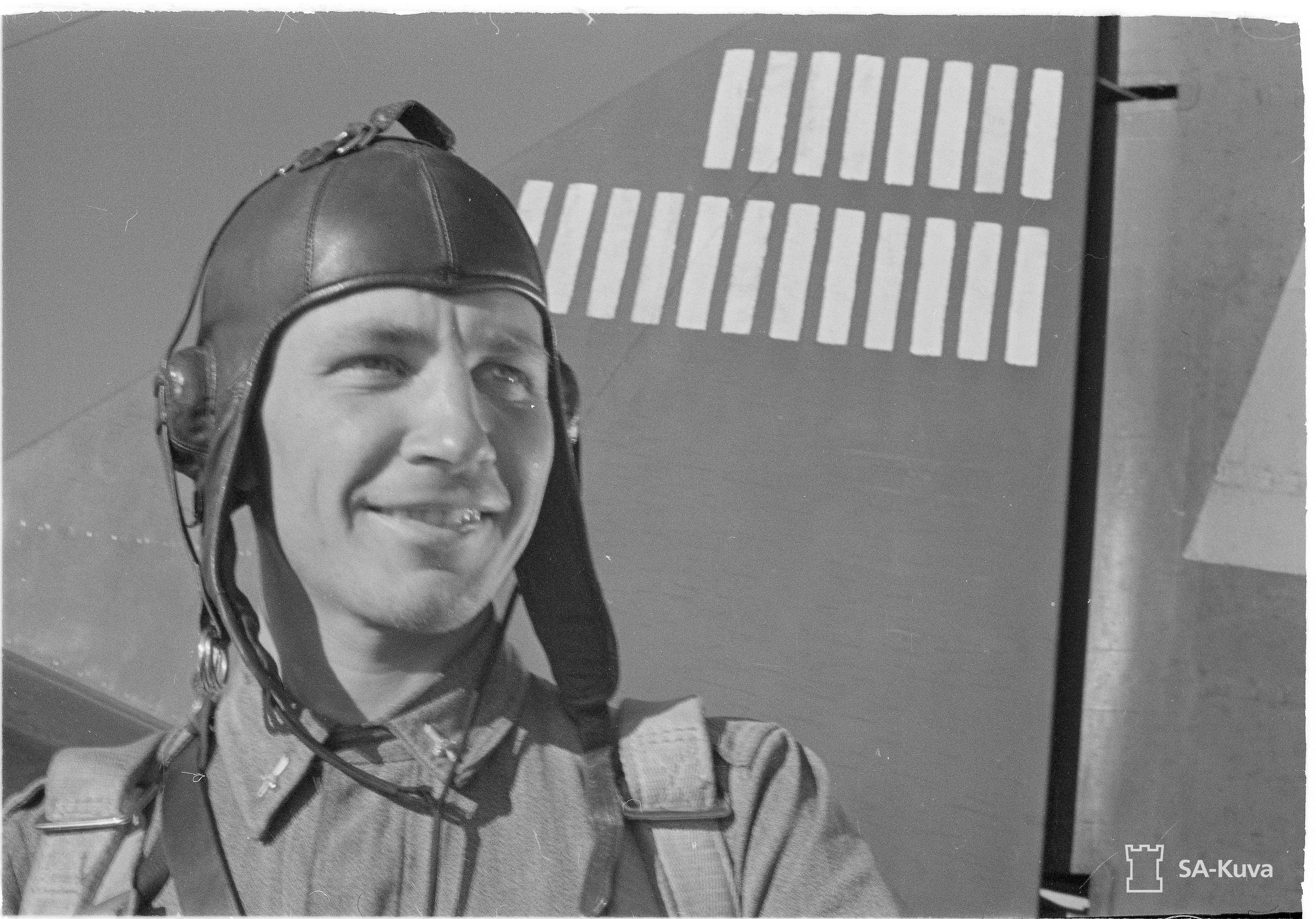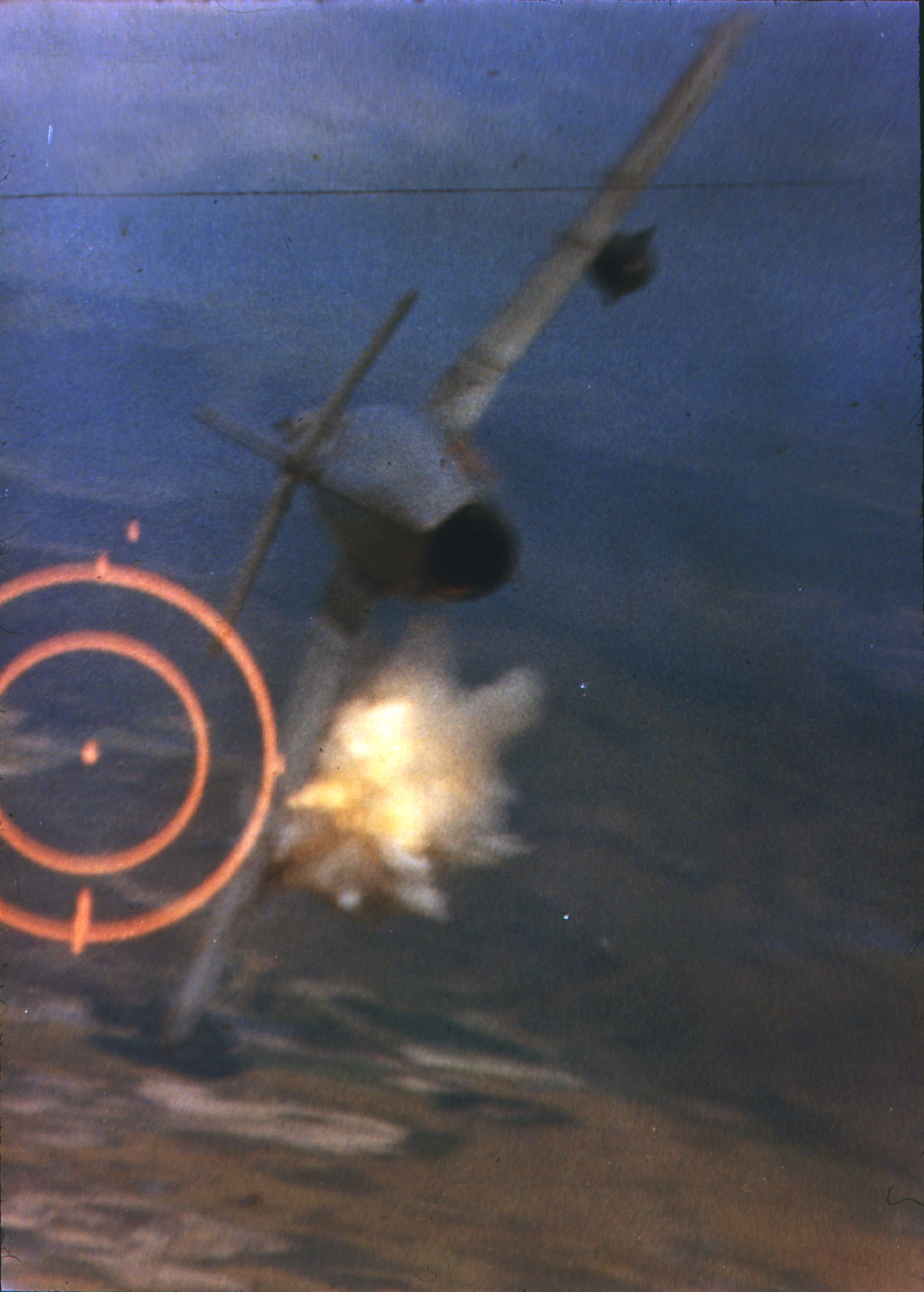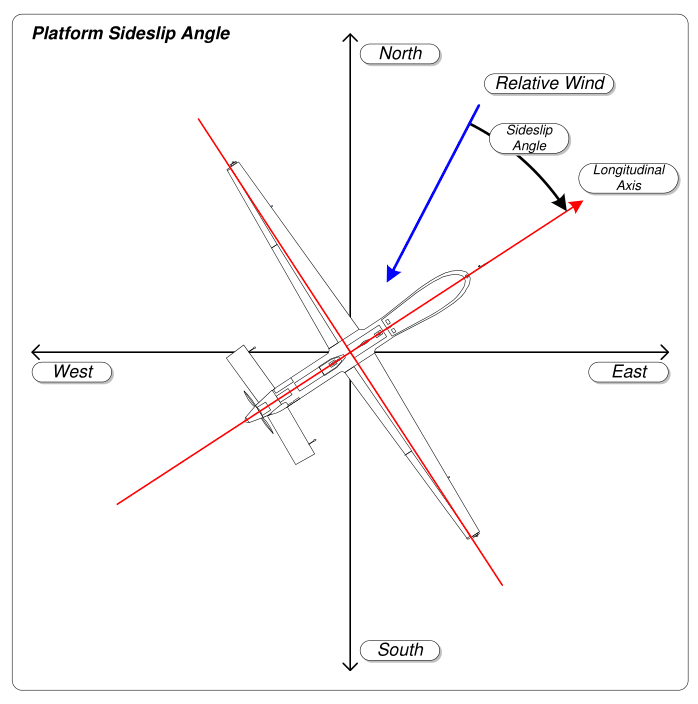|
Hineri-komi
The Hineri-komi (捻り込み—literal meaning: twist inside) was an air combat maneuver widely used by fighter pilots of Imperial Japanese Navy Air Service (IJNAS) through the Second Sino-Japanese War and the Pacific War. It allows an aircraft, which is being pursued by an enemy, to come at the pursuer's tail or to gain an opportunity to take a shot at it. History Hineri-komi maneuver was invented and developed by Isamu Mochizuki in the early 1930s during his four-year stay with Yokosuka Air Group. Minoru Genda, who was also part of Yokosuka Air Group at the same time, observed this technique during the training sessions with Mochizuki and helped to formalize it in order to be widely adopted by other IJNAS pilots in dogfights. Execution The maneuver starts with a steep climb into a half loop, where the pilot applies (e.g., right) rudder to yaw his aircraft and performs a side slip. At the top of the loop, the aircraft ends up inverted and pointing outside of the loop's verti ... [...More Info...] [...Related Items...] OR: [Wikipedia] [Google] [Baidu] |
Isamu Mochizuki
was an officer and ace fighter pilot in the Imperial Japanese Navy (IJN) during the Second Sino-Japanese War and the Pacific theater of World War II. He was officially credited with destroying ten enemy aircraft over China and the Pacific. He is famous for inventing the hineri-komi half-loop-and-roll technique that was employed in dogfighting by many Japanese fighter pilots. Career Mochizuki enlisted in IJN in 1925 and completed its pilot training program in November 1926. He first served on carrier ''Kaga'' and then on carrier ''Hōshō'', before he was transferred to a fighter squadron based at Ōmura Naval Air Station in Nagasaki Prefecture on Kyushu. In November 1932, he was transferred to Yokosuka Air Group, which was at the time considered an elite unit consisting of the very best fighter pilots in IJN. In November 1936, Mochizuki was promoted to Warrant Officer. At the outbreak of Second Sino-Japanese War he was transferred to the 13th Air Group that operated from S ... [...More Info...] [...Related Items...] OR: [Wikipedia] [Google] [Baidu] |
Air Combat Manoeuvring
Air combat manoeuvring (also known as ACM or dogfighting) is the tactical art of moving, turning and/or situating one's fighter aircraft in order to attain a position from which an attack can be made on another aircraft. Air combat manoeuvres rely on offensive and defensive basic fighter manoeuvring (BFM) to gain an advantage over an aerial opponent. Historical overview Military aviation appeared in World War I when aircraft were initially used to spot enemy troop concentrations, field gun positions and movements. Early aerial combat consisted of aviators shooting at one another with hand-held weapons.Who Killed the Red Baron? October 7, 2003. . The ... [...More Info...] [...Related Items...] OR: [Wikipedia] [Google] [Baidu] |
Fighter Pilot
A fighter pilot is a military aviator trained to engage in air-to-air combat, air-to-ground combat and sometimes electronic warfare while in the cockpit of a fighter aircraft. Fighter pilots undergo specialized training in aerial warfare and dogfighting (close range aerial combat). A fighter pilot with at least five air-to-air kills becomes known as an ace. Recruitment Fighter pilots are one of the most highly regarded and desirable positions of any air force. Selection processes only accept the elite out of all the potential candidates. An individual who possesses an exceptional academic record, physical fitness, healthy well-being, and a strong mental drive will have a higher chance of being selected for pilot training. Candidates are also expected to exhibit strong leadership and teamwork abilities. As such, in nearly all air forces, fighter pilots, as are pilots of most other aircraft, are commissioned officers. Fitness Fighter pilots must be in optimal health to ... [...More Info...] [...Related Items...] OR: [Wikipedia] [Google] [Baidu] |
Imperial Japanese Navy Air Service
The was the Naval aviation, air arm of the Imperial Japanese Navy (IJN). The organization was responsible for the operation of naval aircraft and the conduct of aerial warfare in the Pacific War. The Japanese military acquired their first aircraft in 1910 and followed the development of air combat during World War I with great interest. They initially procured European aircraft but quickly built their own and launched themselves onto an ambitious aircraft carrier building program. They launched the world's first purpose-built aircraft carrier, , in 1922. Afterwards they embarked on a conversion program of several excess battlecruisers and battleships into aircraft carriers. The IJN Air Service had the mission of national air defence, deep strike, naval warfare, and so forth. It retained this mission to the end. The Pilot training in the Imperial Japanese Navy, Japanese pilot training program was very selective and rigorous, producing a high-quality and long-serving pilot corps ... [...More Info...] [...Related Items...] OR: [Wikipedia] [Google] [Baidu] |
Second Sino-Japanese War
The Second Sino-Japanese War (1937–1945) or War of Resistance (Chinese term) was a military conflict that was primarily waged between the Republic of China and the Empire of Japan. The war made up the Chinese theater of the wider Pacific Theater of the Second World War. The beginning of the war is conventionally dated to the Marco Polo Bridge Incident on 7 July 1937, when a dispute between Japanese and Chinese troops in Peking escalated into a full-scale invasion. Some Chinese historians believe that the Japanese invasion of Manchuria on 18 September 1931 marks the start of the war. This full-scale war between the Chinese and the Empire of Japan is often regarded as the beginning of World War II in Asia. China fought Japan with aid from Nazi Germany, the Soviet Union, United Kingdom and the United States. After the Japanese attacks on Malaya and Pearl Harbor in 1941, the war merged with other conflicts which are generally categorized under those conflicts of World War II a ... [...More Info...] [...Related Items...] OR: [Wikipedia] [Google] [Baidu] |
Pacific War
The Pacific War, sometimes called the Asia–Pacific War, was the theater of World War II that was fought in Asia, the Pacific Ocean, the Indian Ocean, and Oceania. It was geographically the largest theater of the war, including the vast Pacific Ocean theater, the South West Pacific theater, the Second Sino-Japanese War, and the Soviet–Japanese War. The Second Sino-Japanese War between the Empire of Japan and the Republic of China had been in progress since 7 July 1937, with hostilities dating back as far as 19 September 1931 with the Japanese invasion of Manchuria. However, it is more widely accepted that the Pacific War itself began on 7 December (8 December Japanese time) 1941, when the Japanese simultaneously invaded Thailand, attacked the British colonies of Malaya, Singapore, and Hong Kong as well as the United States military and naval bases in Hawaii, Wake Island, Guam, and the Philippines. The Pacific War saw the Allies pitted against Japan, the latter ai ... [...More Info...] [...Related Items...] OR: [Wikipedia] [Google] [Baidu] |
Fixed-wing Aircraft
A fixed-wing aircraft is a heavier-than-air flying machine, such as an airplane, which is capable of flight using wings that generate lift caused by the aircraft's forward airspeed and the shape of the wings. Fixed-wing aircraft are distinct from rotary-wing aircraft (in which the wings form a rotor mounted on a spinning shaft or "mast"), and ornithopters (in which the wings flap in a manner similar to that of a bird). The wings of a fixed-wing aircraft are not necessarily rigid; kites, hang gliders, variable-sweep wing aircraft and airplanes that use wing morphing are all examples of fixed-wing aircraft. Gliding fixed-wing aircraft, including free-flying gliders of various kinds and tethered kites, can use moving air to gain altitude. Powered fixed-wing aircraft (airplanes) that gain forward thrust from an engine include powered paragliders, powered hang gliders and some ground effect vehicles. Most fixed-wing aircraft are flown by a pilot on board the craft, but some ar ... [...More Info...] [...Related Items...] OR: [Wikipedia] [Google] [Baidu] |
Minoru Genda
was a Japanese military aviator and politician. He is best known for helping to plan the attack on Pearl Harbor. He was also the third Chief of Staff of the Japan Air Self-Defense Force. Early life Minoru Genda was the second son of a farmer from Kake, Hiroshima Prefecture, north of the city of Hiroshima. Two brothers were graduates of Tokyo University, another brother graduated from Chiba Medical College, and his youngest brother entered the Army Academy. Genda graduated from the Imperial Japanese Naval Academy in 1924 and took flight training for 11 months in 1928–1929, graduating with honors to become a fighter pilot. Early military service Genda was assigned to the aircraft carrier in 1931. He was well known in the navy, and in 1932 Genda formed a demonstration team at Yokosuka, leading a division of biplanes around the country, conducting aerobatic demonstrations. Known as "Genda's Flying Circus", the team, consisting of Genda, Yoshita Kobayashi and Motoharu Okamu ... [...More Info...] [...Related Items...] OR: [Wikipedia] [Google] [Baidu] |
Dogfight
A dogfight, or dog fight, is an aerial battle between fighter aircraft conducted at close range. Dogfighting first occurred in Mexico in 1913, shortly after the invention of the airplane. Until at least 1992, it was a component in every major war, though with steadily declining frequency. Since then, longer-range weapons have made dogfighting largely obsolete. Modern terminology for air-to-air combat is air combat maneuvering (ACM), which refers to tactical situations requiring the use of individual basic fighter maneuvers (BFM) to attack or evade one or more opponents. This differs from aerial warfare, which deals with the strategy involved in planning and executing various missions. Etymology The term ''dogfight'' has been used for centuries to describe a melee: a fierce, fast-paced close quarters battle between two or more opponents. The term gained popularity during World War II, although its origin in air combat can be traced to the latter years of World War I. One of ... [...More Info...] [...Related Items...] OR: [Wikipedia] [Google] [Baidu] |
Rudder
A rudder is a primary control surface used to steer a ship, boat, submarine, hovercraft, aircraft, or other vehicle that moves through a fluid medium (generally aircraft, air or watercraft, water). On an aircraft the rudder is used primarily to counter adverse yaw and p-factor and is not the primary control used to turn the airplane. A rudder operates by redirecting the fluid past the hull (watercraft), hull or fuselage, thus imparting a turning or yaw (rotation), yawing motion to the craft. In basic form, a rudder is a flat plane or sheet of material attached with hinges to the craft's stern, tail, or after end. Often rudders are shaped so as to minimize Drag (physics), hydrodynamic or aerodynamic drag. On simple watercraft, a tiller—essentially, a stick or pole acting as a lever arm—may be attached to the top of the rudder to allow it to be turned by a helmsman. In larger vessels, cables, pushrods, or hydraulics may be used to link rudders to steering wheels. In typical air ... [...More Info...] [...Related Items...] OR: [Wikipedia] [Google] [Baidu] |
Aircraft Principal Axes
An aircraft in flight is free to rotate in three dimensions: '' yaw'', nose left or right about an axis running up and down; ''pitch'', nose up or down about an axis running from wing to wing; and ''roll'', rotation about an axis running from nose to tail. The axes are alternatively designated as ''vertical'', ''lateral'' (or ''transverse''), and ''longitudinal'' respectively. These axes move with the vehicle and rotate relative to the Earth along with the craft. These definitions were analogously applied to spacecraft when the first manned spacecraft were designed in the late 1950s. These rotations are produced by torques (or moments) about the principal axes. On an aircraft, these are intentionally produced by means of moving control surfaces, which vary the distribution of the net aerodynamic force about the vehicle's center of gravity. Elevators (moving flaps on the horizontal tail) produce pitch, a rudder on the vertical tail produces yaw, and ailerons (flaps on the win ... [...More Info...] [...Related Items...] OR: [Wikipedia] [Google] [Baidu] |
Slip (aerodynamics)
A slip is an aerodynamic state where an aircraft is moving ''somewhat'' sideways as well as forward relative to the oncoming airflow or relative wind. In other words, for a conventional aircraft, the nose will be pointing in the opposite direction to the bank of the wing(s). The aircraft is not in coordinated flight and therefore is flying inefficiently. Background Flying in a slip is aerodynamically inefficient, since the lift-to-drag ratio is reduced. More drag is at play consuming energy but not producing lift. Inexperienced or inattentive pilots will often enter slips unintentionally during turns by failing to coordinate the aircraft with the rudder. Airplanes can readily enter into a slip climbing out from take-off on a windy day. If left unchecked, climb performance will suffer. This is especially dangerous if there are nearby obstructions under the climb path and the aircraft is underpowered or heavily loaded. A slip can also be a ''piloting maneuver'' where the pilot del ... [...More Info...] [...Related Items...] OR: [Wikipedia] [Google] [Baidu] |







